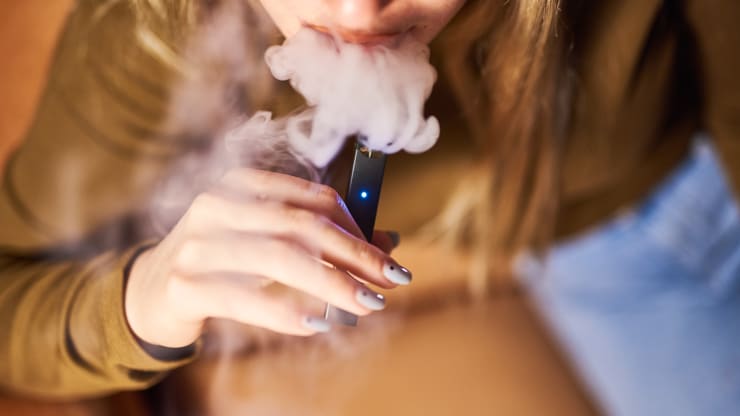E Cigarettes: A Teenage Epidemic
When thinking of the term epidemic, one might think of the flu, or the common cold. In reality, a current epidemic is closer to home to teenagers than one might think; e-cigarettes. These devices go by many names. On the streets, one might hear the terms vapes, Juuls, pens, E-hookahs, and the list goes on. They’re all e-cigarettes, and they are all dangerous. They are a relatively trendy alternative to smoking conventional cigarettes or other tobacco based products. They are harmful in multiple ways and changes need to occur if we want to protect our youth.
The key thing a person should know about these products is that they contain nicotine. Nicotine is an addictive chemical found in normal and electronic cigarettes.
Digging deeper into the products, it’s also important to understand how the products function. E-cigarettes deliver nicotine through a liquid (also called E-juice) consisting of glycerin and/or propylene glycol, as well as flavorings that are attractive to the consumer.
The building components of a basic e-cig are a cartridge containing a nicotine solution, a heating element that aerosolizes the solution, (converts the substance into the form of particles small and light enough to be carried in the air), and a power source, which in most cases is a rechargeable lithium battery. The contents of these products is a vile concoction of chemicals and microscopic particles. Flavorings for the e-cig juice contains Diacetyl, a chemical related to serious lung disease, including obliterative bronchiolitis, an irreversible disease. Heavy metals such as nickel, tin, and lead can also be inhaled and could potentially cause effects such as chronic bronchitis. These heavy metals have been discovered within e-cigarette vapor and it has been found that the particles are leaking from the heating coils inside of the product.
One of the most controversial aspects of e-cigarettes are their impact on the teenage youth. In a report published by the National Institute on Drug Abuse for Teens, in 2016 alone, 9.5 percent of 8th graders are reported to use e-cigs, along with 14.0 percent among 10th graders, and 16.2 percent among 12th graders. Any type of use among teens is illegal, and it is disheartening to see the increase of teen usage.
“I feel like teen usage will lead to regular cigarette usage, and in general it’s not healthy mentally or physically,” Tiffany Jones, Junior, said.
Steps currently being taken to try to control the wildfire of addiction in youth is on the national scale. White House officials in Washington D.C. have announced the plan to attempt to place a ban on the selling of flavored e-cigarettes in the next following months due to the fact that flavored cartridges are a main factor in addiction other than nicotine. There are non-flavored, strictly nicotine e-cigarette juice available, but that still leads to bad cases of addiction.
On the state scale, both the states of New York and Michigan have enacted a ban of flavored e-cigarettes, and the states of Massachusetts and California are eyeing a similar plan.
“I don’t necessarily feel that these products should be banned because some people actually use them as an alternative to tobacco products, but others just do it because it’s trendy, which is not okay,” Patrick Donnelly, Junior, expressed.
“Officials and community leaders need to focus on eliminating the selling of these products in stores to the youth demographic,” Jones added.
Although officials cannot ban e-cigarette products due to the fact of it being a safer alternative to tobacco products and regular cigarettes, the potential banning of flavored cartridges is surely a start to eliminating a teenage epidemic.

Max is a senior at Liberty, and this is his second year with the newspaper. Max participates in football and track for the Bolts. He is a writer for the...













